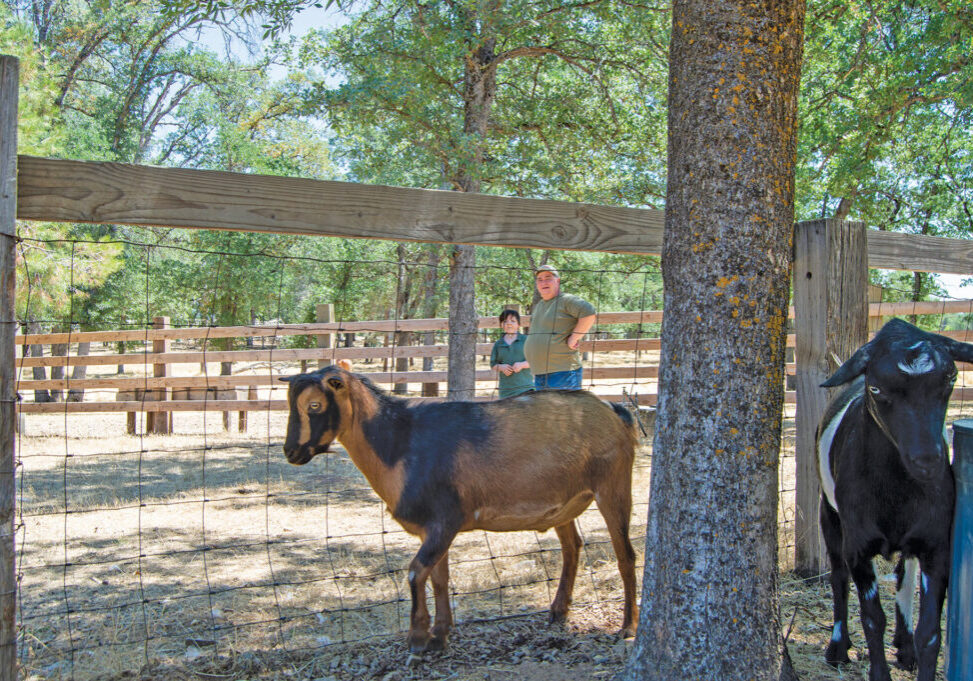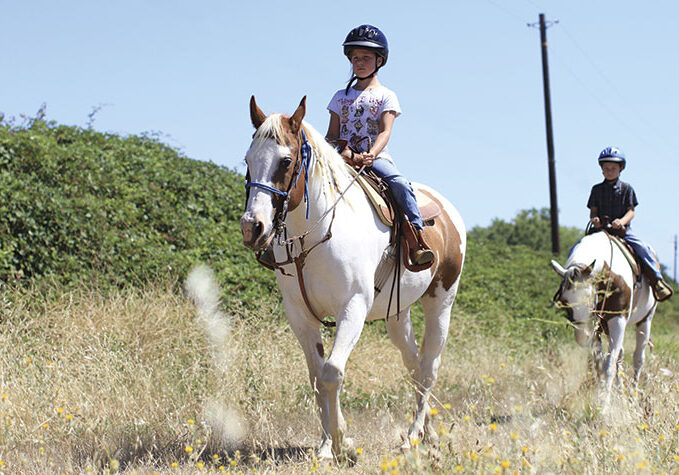Northern California is known for its beautiful landscapes and it’s important to share the land respectfully with the variety of animals who rely on these natural habitats to survive. The increasing presence of human conflict, natural disasters and climate change have combined to damage or destroy wildlife habitats and injure wild animals. Fortunately, there are many volunteers in Northern California who’ve dedicated their lives to help rescue injured wild animals and keep wildlife wild.
Rescuing Raptors at Defiance Canyon Raptor Rescue
As one of the few raptor rehabbers in Northern California permitted to help bald and golden eagles, Defiance Canyon Raptor Rescue (DCRR) in Manton, believes that all birds of prey are important. Battle Creek Alliance director and DCRR founder and director Marily Woodhouse had been working to protect watersheds, forests and wildlife when one day in 2013 she found a pygmy owl on her back porch needing help. “I had never heard of wildlife rehabilitation but learned about it when trying to find care for the owl” she says. Woodhouse worked for a rehabilitation facility before completing the process to receive state and federal permits to care for raptors in 2016 and is now helping raptors in seven counties throughout the North State. “I’ve cared for over 300 birds since getting my permits, and that includes 60 eagles,” Marily says.
While finding funding to keep her work going is the hardest part of her work, Woodhouse perseveres because of her sense of responsibility to, and love for, the raptors in our region. “The birds need help and there’s no one there to help them. Most agencies say, ‘let nature take its course.’ But it’s often not nature that’s hurting these birds,” she says, explaining that the raptor population is most affected by human-caused effects like getting hit by cars, toxic first- or secondhand poisoning, electrocution from power lines and habitat loss.
To best help Northern California birds, Woodhouse suggests supporting your local wildlife rehab organization and being mindful while driving. “When you’re out driving around and see birds near the road, slow down. There are turkey vultures and raptors on the side of the road eating things because that’s their main food source. Pay attention to your surroundings and spare some lives.”
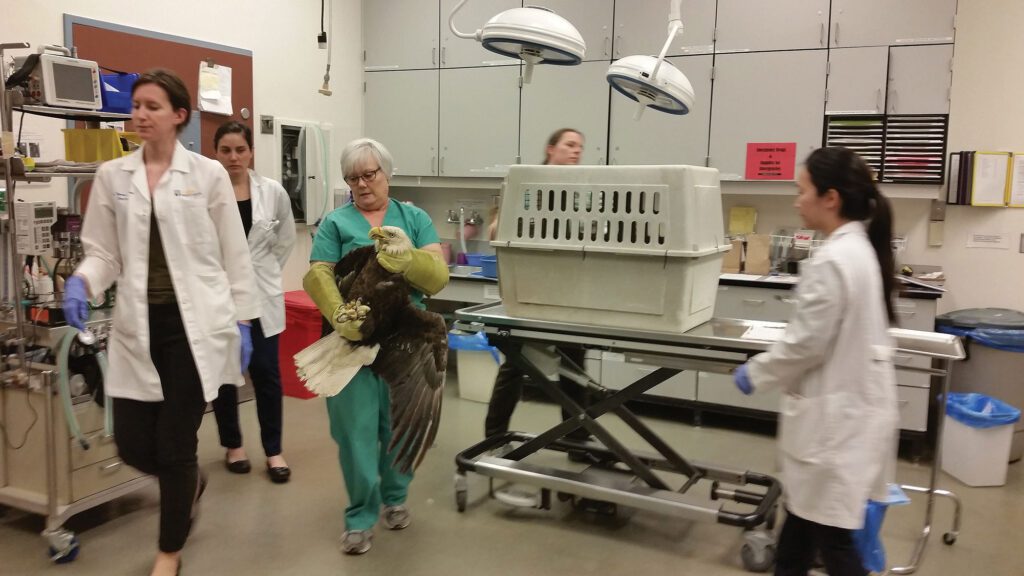
This adult male eagle was hit by a car, and his beak and clavicle were fractured. Battle Creek Alliance & Defiance Canyon Raptor Rescue transported him to UC Davis for surgery. Photo credit: Battle Creek Alliance.
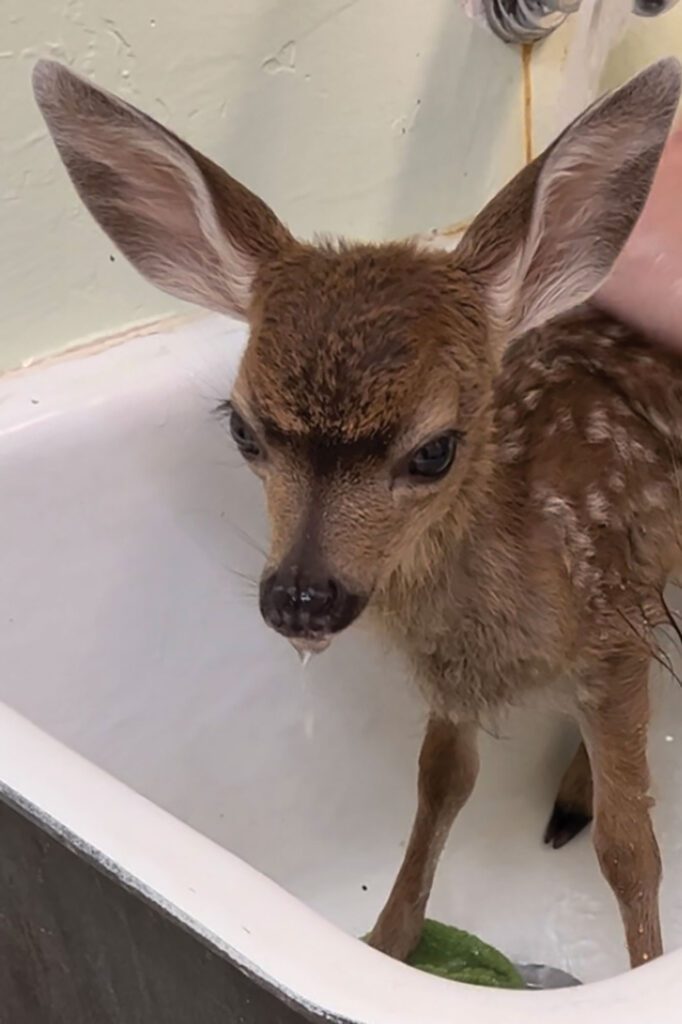
Shasta Wildlife rescues and rehabilitates a wide variety of local wild animals in distress like this Black Tailed deer fawn. Photo credit: Shasta Wildlife.
Shasta Wildlife keeps wildlife wild
Jeanne (Raven) Capozzo, executive director of Shasta Wildlife, is passionate about animals and you’re bound to learn something new in even just a few minutes chatting with her.
Even though it’s in the middle of summer, this year is the bumper crop of babies for Shasta Wildlife, headquartered in Anderson. Most of the calls coming in are about fledglings, young squirrels and opossums that are likely responding to the heatwaves and wildfires. “Between the Carr Fire, the pandemic and the Camp Fire, it’s been a weird couple of years,” Raven says.
An average of 1,000 animals are brought into the center per year. Although most of the animals in its care are housed at volunteers’ homes, Shasta Wildlife tries to be as hands-off as possible with the abandoned, orphaned or injured animals to give them the chance to “wild up.” “When an animal absolutely hates us, it makes us so happy,” says Raven.
Call (530) 365-9453 or visit Shasta Wildlife if you find a struggling animal or you would like to volunteer.
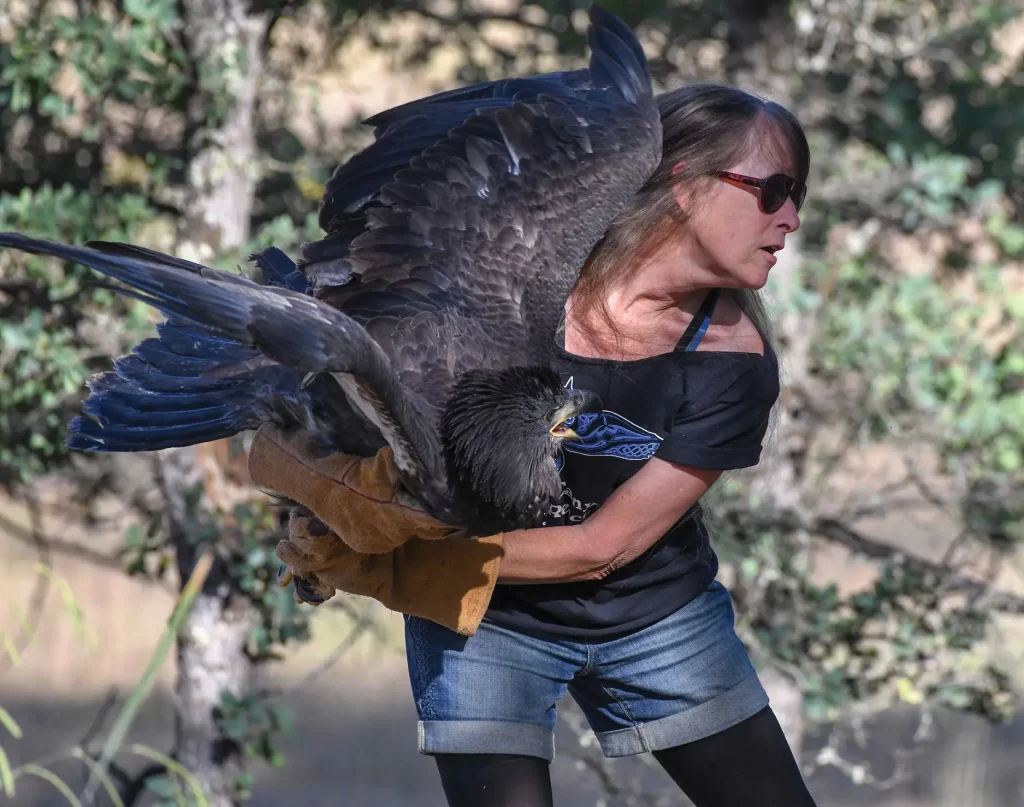
This 12-week-old eaglet was disturbed by heavy equipment and left the nest several weeks before she could fly. Marilyn Woodhouse, director of Battle Creek Alliance & Defiance Canyon Raptor Rescue, released her when she was finally able to fly.
Bidwell Wildlife Rehabilitation: teaching us to coexist with wildlife
Founded in 1973 by prolific wildlife rehabilitator Marilyn Gamette, Paradise-based Bidwell Wildlife Rehabilitation (BWR) is still busy today providing shelter and medical treatment for orphaned and injured wildlife in Butte, Colusa and Glenn counties. BWR volunteer and board member Shelly Rogers says that the most common types of mammals that people call in about are gray squirrels and opossums but Bidwell gets far more birds than mammals.
BWR is entirely supported by donations and volunteers and like the other wildlife rehab organizations, getting enough funding and volunteers are its two biggest challenges. “Wildlife rehabilitation is extremely time consuming, especially when you’re bottle-feeding baby animals every three to four hours. It can be heartbreaking and it’s messy,” Shelly says. But this investment of time and energy is worth it. “We’re saving lives and sometimes that means taking an animal that would’ve died and giving it a healthy life.”
Shelly says, “We do encounter people who want us to trap and relocate an animal and we do not do that – that is not our mission. We believe that it’s important to coexist with wildlife, treat them as your neighbors. We are all part of the wildlife staying healthy in our communities.”
For more information, visit Bidwell Wildlife Rehabilitation.
Posted in: Animals
Comment Policy: All viewpoints are welcome, but comments should remain relevant. Personal attacks, profanity, and aggressive behavior are not allowed. No spam, advertising, or promoting of products/services. Please, only use your real name and limit the amount of links submitted in your comment.
You Might Also Like...
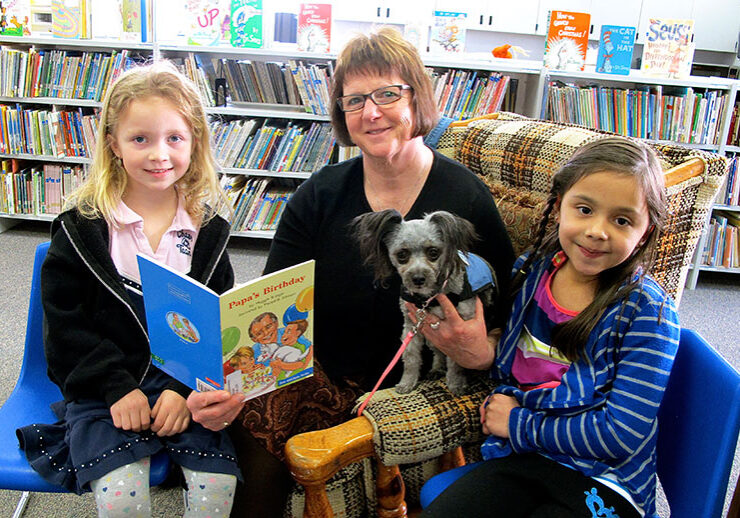
A Special Time for Reading at Mt. Shasta Elementary School
Four years ago Mt. Shasta Elementary School started a noontime reading program, at the suggestion of its former principal Sally Gasaway. The program, implemented by school librarian Laurie Caldwell, is […]
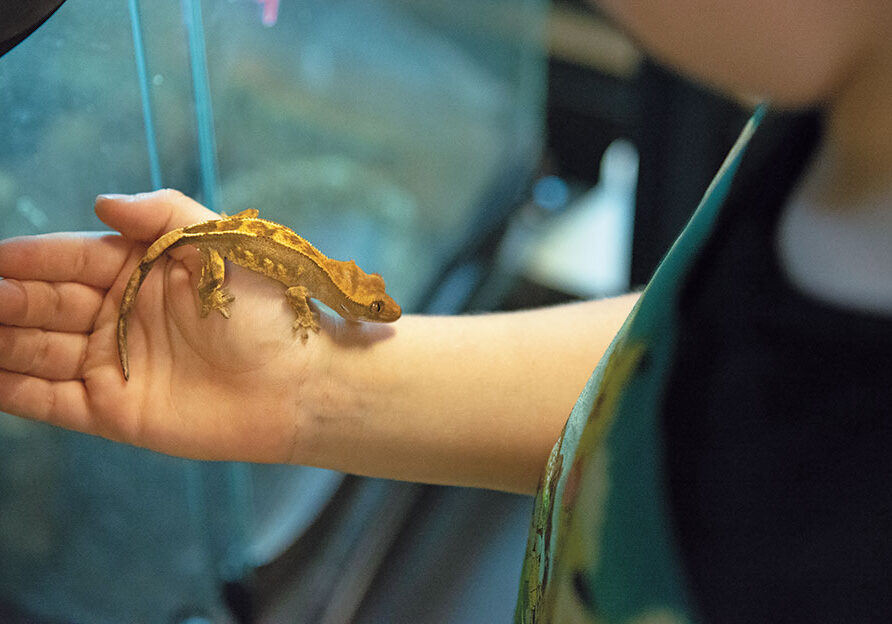
Choosing The Best Pet For Your Family
They’re cute and they can be cuddly, but how do you know what kind of pet would work best for your family? When deciding on the right pet for you, […]

Reading To Animals – A Fun Way To Help Children Improve Their Reading
Reading is a necessary skill for everyone, but sometimes children can feel overwhelmed with doing it and even more afraid of reading out loud. However, reading to animals can make […]
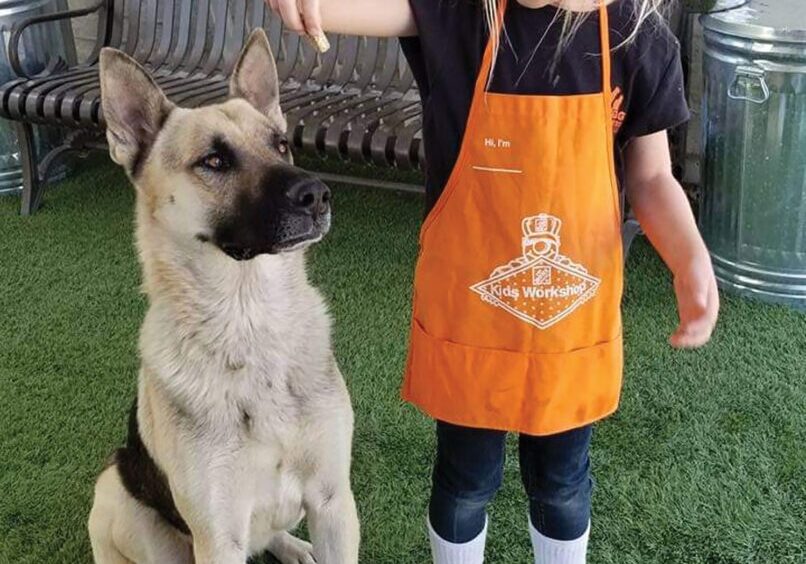
Teaching Children Responsible Pet Ownership
When I think about things that make my heart smile, two things often come to mind: puppies and children. As many families will attest, adding a pet to your home […]



